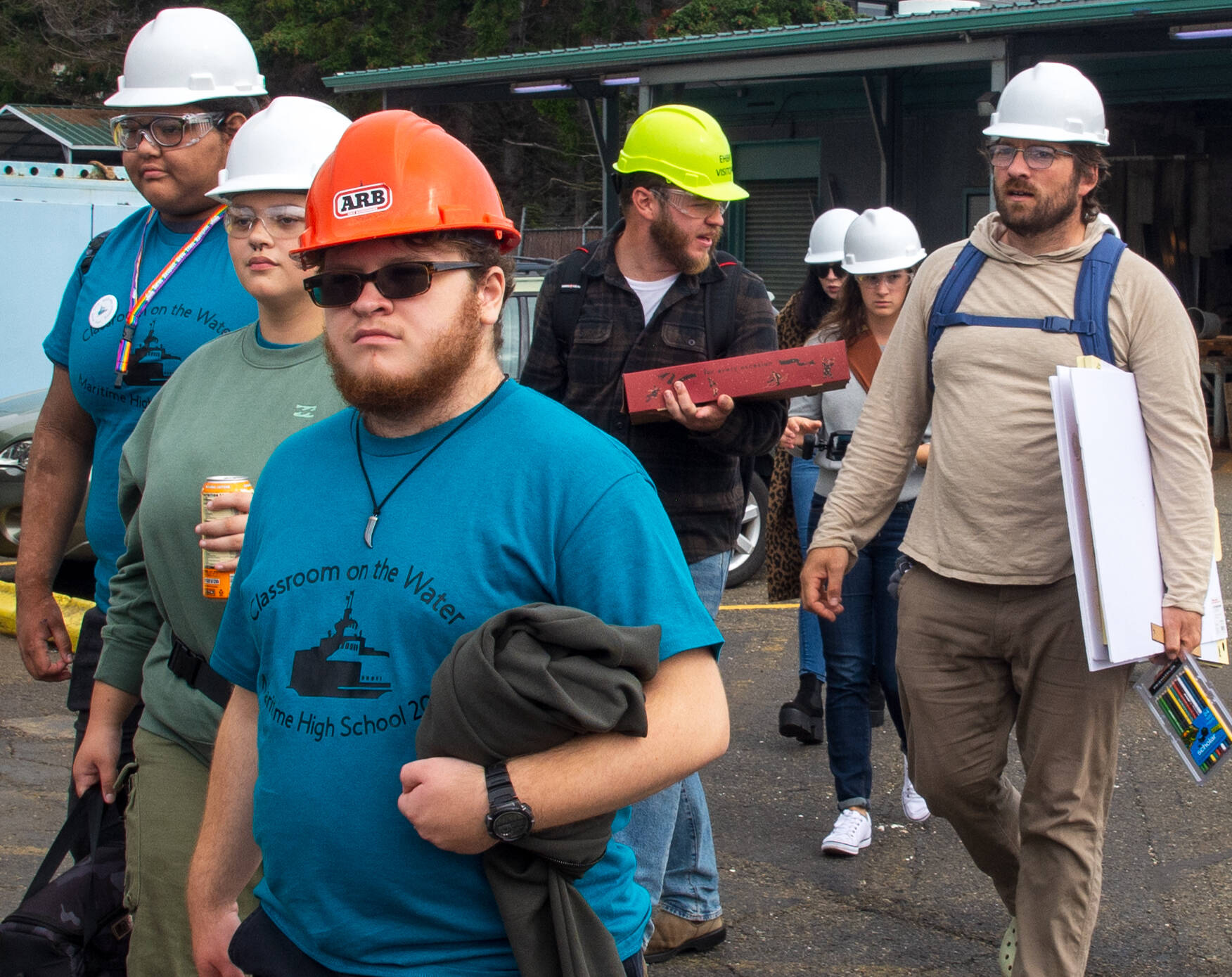There’s an old workforce saying that it’s not what you know, but who you know. That was especially true at Washington State Ferries.
For a long time, maritime jobs were difficult to access, often requiring connections to break into the field. “We’re trying to get rid of that barrier and bring in more people from all kinds of backgrounds. It shouldn’t be about who you know any more,” said Bryn Hunter, WSF communications officer.
WSF can’t rely on that anymore because there is a desperate shortage of qualified workers. The maritime industry, particularly in Washington state, has struggled with a shrinking workforce, especially in positions like licensed deck officers, captains and other specialized roles unique to Puget Sound. “There’s a global shortage of mariners, and we’re feeling it,” Hunter said.
To help solve that problem, WSF is looking to give high school students a taste of what the career would be like with on-the-job training. It has partnered with Highline Public Schools and the Northwest Maritime Center to address workforce shortages and make maritime careers more accessible. “We’re trying to raise awareness of these jobs,” Hunter said.
The program offers students hands-on experience aboard WSF vessels, exposing them to various roles, from engine room operations to deck navigation. For students, it may help them envision a career that many may not have considered before.
The Classroom on the Water program, which ran in September, provided an immersive learning experience for students. “They performed safety drills and navigational exercises,” Hunter said, emphasizing the hands-on nature of the program. “You can start this job right out of high school, it pays well, and there are good benefits. You can live locally, which isn’t common in a lot of maritime careers.”
Students follow one of three pathways: vessel operations, marine science or marine construction. By the time they graduate, they’ll have the skills for well-paying, in-demand maritime roles where in some positions workers start out making $70,000 a year.
Anika Colvin, communications director at Northwest Maritime Center, highlighted the importance of the collaboration. “We want to help make sure there are not only more maritime workers but also that the ferry system workforce reflects the communities it serves,” she said.
The program has already garnered positive feedback from students and educators. Principal Jamila Gordon of Maritime High School shared her excitement. “The kids came back and would say, ‘I could imagine myself working on the ferries.’ Being out on the water alongside people doing the work helps students envision a future on the water.”
Gordon noted the importance of introducing financial literacy as part of the school’s curriculum to help students make wise decisions when they start earning substantial salaries.
As WSF and its collaborators look to the future, the goal is to continue expanding outreach programs to bring in more students.
Hunter emphasized the critical role of these jobs: “Without mariners, without this industry, and our terminal staff, engine room folks, and deckhands, we couldn’t operate. Island communities would be isolated.”



